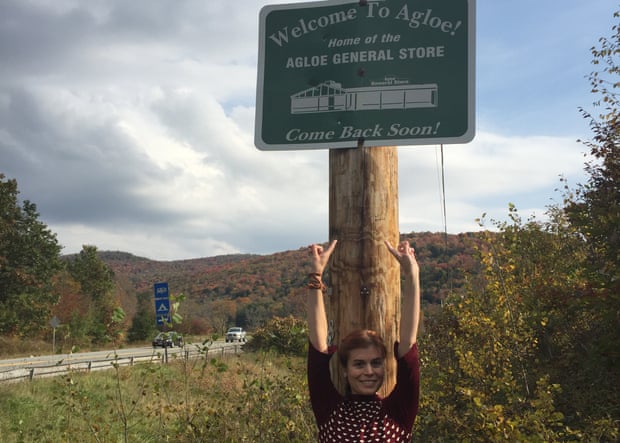Map-makers insert fake towns or trap-streets to catch out plagiarists, but Agloe, in New York state, took on a strange life of its own.
–
In 2008, Argleton village in west Lancashire appeared on Google, complete with weather reports, a job site and an estate agent advertising houses for sale. Argleton vanished two years later. While its site was – and still is – a damp field in the middle of nowhere, it’s worth noting that Argleton is an anagram of G Not Real. Although Google never admitted to having created it, Argleton was a phantom settlement, planted as a trap.
In the world of digital mapping and cartography, snares to catch unwary plagiarists take the form of fake roads or places, known as “trap streets” or “paper towns”. For some, such as Lye Close or Noereal Road, the clue is in the name. (A real alleyway in Cardiff that served as a trap street in the 2014 Dr Who episode Face the Raven may, conversely, be the world’s only fictional fictional street.)
Perhaps the most notable cartographic curiosity is Agloe, immortalized in John Green’s 2008 novel, Paper Towns. When its protagonist Margo disappears, she leaves oblique clues as to her whereabouts. The trail leads to somewhere and nowhere – Agloe.
Agloe was the creation of two men: Otto Lindberg and Ernest Alpens from America’s General Drafting Company. Commissioned to make a map of New York state in the 1930s, they used the initials of their names to create a paper town – Agloe – which they dropped into a dirt road intersection in the Catskills.
When it appeared years later on a map made by one of their competitors, Rand McNally, General Drafting threatened to sue. McNally pointed out that it would lose the case: Agloe’s general store could be found at the intersection. Its store manager, having spotted Agloe on a map, had taken it as a good place to set up shop. A lack of houses or indeed a town of any kind should have suggested otherwise; the unfortunate shopkeeper went out of business shortly after. It was, however, sufficient proof that Agloe existed. Contemporary maps still feature Agloe. This, its strange history and the popularity of the book Paper Towns ensures a steady stream of curious sightseers.
“Isn’t it ironic? Like rain on your wedding day,” sang Alanis Morissette in Ironic. That the song failed to include any actual examples of irony is in itself ironic. As is the continuing existence of Agloe, a place that still is, because it never was.
–
(For the source of this, and many other equally curious articles, please visit: https://www.theguardian.com/travel/2020/may/03/imaginary-american-town-tourist-attraction-agloe-new-york-state/)









